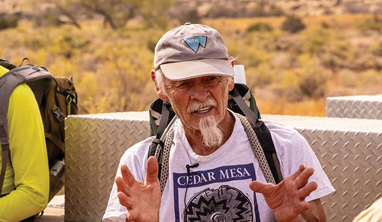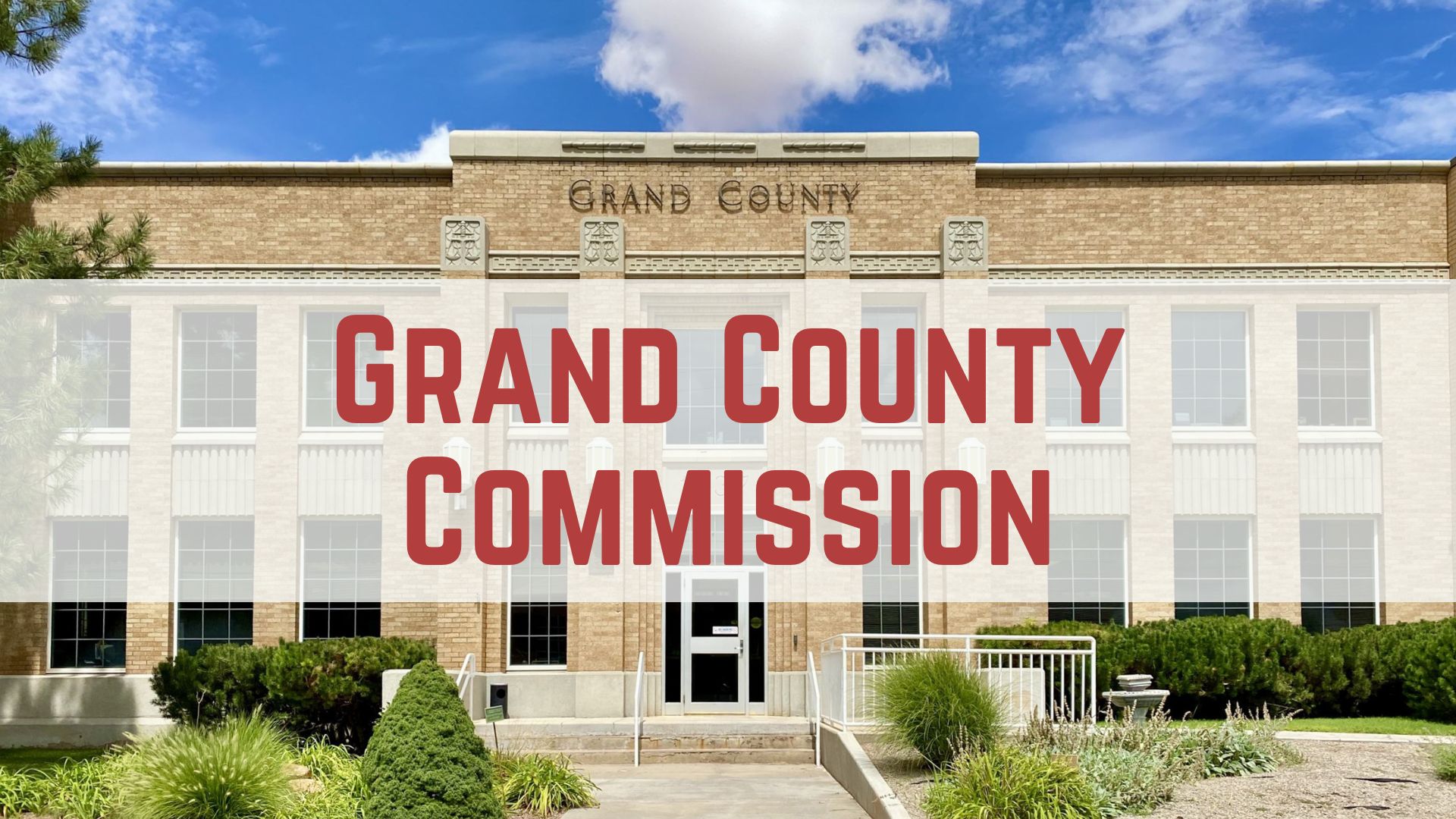Some information may be outdated.
The Grand County Council’s complexion may have changed. But a majority of council members still support an Obama-era plan to manage mineral development and outdoor recreation on more than 785,000 acres of federal land in the greater Moab area.
Council members voted 4-2 on Tuesday, Sept. 19, to approve a letter to U.S. Interior Secretary Ryan Zinke that endorses the Bureau of Land Management’s (BLM’s) Master Leasing Plan for lands it administers in southern Grand and northern San Juan counties. Rory Paxman and Patrick Trim voted against the majority, while Curtis Wells recused himself from voting on the motion from Grand County Council vice chair Mary McGann.
At the same time, the council rejected a substitute motion from Wells that would have led to further discussions of the Master Leasing Plan issue, as well as the county’s potential feedback to Zinke, the nation’s top federal land management official.
While the letter that the council ultimately approved is published on the council’s official letterhead, Moab-based nonprofit Public Land Solutions actually submitted the original version of the text to the county.
It comes in response to a secretarial order from Zinke and his second-in-command – a former mining and water industry lobbyist – that aims to streamline National Environmental Policy Act (NEPA) reviews by removing “impediments” to infrastructure projects. In his order, Zinke mandates that federal Environmental Impact Statements must be completed within 15 months, and says that they cannot exceed 150 pages.
President Donald Trump’s administration is currently reviewing oil and gas leasing processes nationwide, including the Master Leasing Plan for the greater Moab area. And before that review comes to a conclusion, Public Land Solutions Managing Director Ashley Korenblat asked council members to reaffirm their support for the BLM’s plan.
“We wanted to let them know that it has made a difference for businesses in Moab, and that it is an important tool that we think should keep going,” Korenblat said.
The BLM released the plan in July 2016, after four years of effort. At the time, agency officials said the plan to guide management activities over a 15-year period strikes a balance between conservation and recreation on the one hand and mineral development on the other.
The now-signed county letter agrees that the plan strikes a “meaningful balance” between the protection of public lands and ongoing opportunities for responsible oil and gas development, although Wells said the plan is anything but balanced.
Echoing former Grand County Council member Lynn Jackson and San Juan County Commissioner Bruce Adams, Wells voiced concerns about the impacts that the plan has on potash development, in particular, within the vast planning area.
Wells told the council that the plan affects 75 percent of the leasing surface or surface use in Grand and San Juan counties – almost 500,000 acres in all.
He cited agency statistics which predict a potential loss of $1.87 billion in economic input over the next 15 years, along with $277 million in state and local revenue during the same period of time, as a result of restrictions under the plan. It could also eliminate 285 jobs, and almost 1,400 short-term jobs related to potash plant development, he said.
“If the federal government is saying by secretarial order, ‘This is going to economically devastate the community,’ it doesn’t create any more balance than the rubber stamp you put on it,” Wells said.
Korenblat told the Moab Sun News that the $2 billion figure mentioned in the plan’s economic analysis refers to the development of every drop of oil and every ounce of potash in both counties. That’s simply an unrealistic level of development, she said.
“Low market prices today and for the indefinite future, along with lack of water and transportation options, make development of 100 percent of those resources completely impractical and extremely unlikely,” she said. “It would be very bad economic policy to allow unplanned leasing to degrade the recreation assets that are currently driving the county’s economy, so we are thankful that the county voted to support the Moab Master Leasing Plan.”
As a secretarial order, Wells said, the plan runs counter to the guidelines and constraints of the Federal Land Policy and Management Act (FLPMA) of 1976.
“Basically, you’ve got a very directive, guided purpose to take natural resource development and minimize it and essentially saying while doing that, that’s providing balance for the area,” Wells said.
People who work in the mineral development industry have identified problems with the plan, he said, and he questioned why council members are listening to “political activists” who are dictating how lands within the county are managed.
“We have to take responsibility for the lands within this district,” Wells said. “We’re not some subservient to the federal government because they own the land in the county…”
As an alternative to McGann’s motion, Wells asked council members to consider drafting their own letter to Zinke, following additional discussions about the Master Leasing Plan.
“If this body wants to support a policy that is going away – not because of politics, but because it’s a bad policy – we need to deliberate on it and generate a letter that has our names on it, and not a special interest,” he said.
Trim, who was appointed to the council in late June after former council member Chris Baird resigned from his seat, said he’d like to be more informed about the issue before he voted on McGann’s motion.
“I guess my point is, if this has that kind of economic impact … I’m not saying I’m for or against it; I’m saying I want to be able to get deeper into this and take a look at it before I would approve it,” Trim said.
McGann, in response, noted that members who served on the previous council reached their decision after spending a great deal of time on the issue, and a majority of them agreed that the Master Leasing Plan should be upheld.
Trim said he respects his predecessors’ consideration of the issue.
“I guess it’s a different council,” he said. “I have my opinion, and I’m sure the new council members have their opinion, so with not being informed enough about this, I don’t think it hurts just to have a few – a couple – sit-downs to really understand this.”
Grand County Council member Evan Clapper said that the council’s consideration of the letter is somewhat time-sensitive because Zinke’s public review of the NEPA order is set to close by month’s end. If no plan is in place, he said, he fears that somebody could drill a well “right in the middle of a prized recreational trail.”
“I would feel rotten if it was just this ongoing thing of revisiting and revisiting,” Clapper said.
Korenblat acknowledged that the document is a complicated one, and she said it will take some time for those who aren’t up to speed yet to familiarize themselves with it. But she said the previously voiced support from the prior council – as well as 75 local businesses – should carry weight with council members.
“I think those should stand for something,” she said.
Council votes 4-2 in favor of Master Leasing Plan letter to Zinke
Appreciate the coverage? Help keep local news alive.
Chip in to support the Moab Sun News.





